How to Remove Marine Epoxy
Marine epoxy is designed to resist water as well as many solvents so cleaning it up and removing it can be a hassle. One of the best ways to remove marine epoxy is to soften it with a heat gun and use a scraper to remove the bulk of it. Afterwards you can switch to some of the stronger solvents to help clean away the rest of the residue and remove the epoxy completely from whatever surface you’re cleaning.
Removing epoxy that is uncured is a lot easier than removing cured epoxy. The problem, of course, is that marine epoxy is designed to cure fairly quickly so there’s a good chance you’ll be removing old, cured epoxy rather than something still relatively fresh.
Removing Epoxy Resin the Simple Way
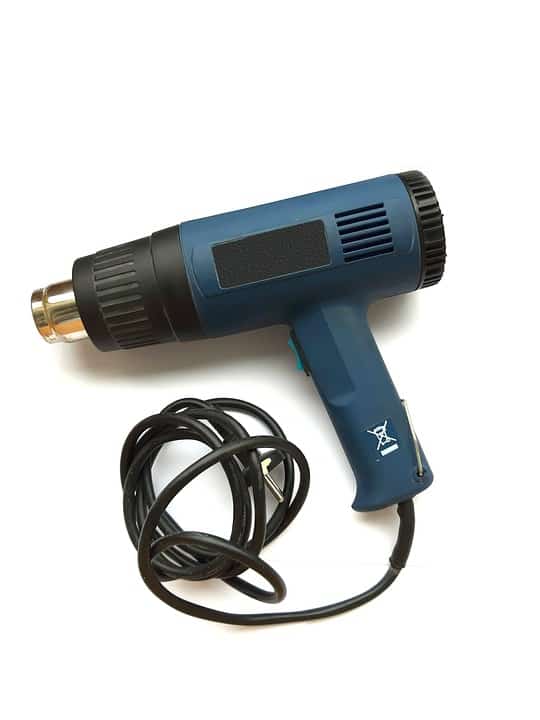
Epoxy loses a lot of its hold and viscosity as it gets warmer which is why a heat gun is an invaluable tool here. Gently apply heat at around 200 F in an even motion across the epoxy surface to get full coverage. The epoxy should soften up fairly quickly into a malleable and manageable state.
Once heated, the epoxy will be able to be removed by simply scraping it off. At this point you’ll need to judge just how you want to treat the surface you’re cleaning. You can use something like a paint scraper, a putty knife or a chisel to remove the epoxy but the harsher the tool and the harsher your hand, the more potential damage you can do to the surface under the epoxy.
If you’re worried about damage to the hull of your fishing boat, gentle scrapers like ones made of wood can help here as they are less likely to gouge and mark up the surface you’re scraping.
I suggest getting your epoxy heated and using a very sharp scraping surface on a very low angle, just scraping right across evenly and smoothly to ensure the least amount of actual gouging and scratching across your epoxied surface. That will limit the damage and give you the cleanest result. Here’s a video that shows a decent technique.
Depending on the surface you’re cleaning, you may just need to sand or buff it afterwards to get it cleaned up and looking good again, assuming you care and want to reuse whatever you’re cleaning up.
This method will remove the bulk of the epoxy you’re dealing with. That said, there’s a high probability you are going to have some residue leftover and if you want to get it fully clean you’ll probably have to rely on a solvent to finish the job for you.
Can Paint Thinner Remove Marine Epoxy?
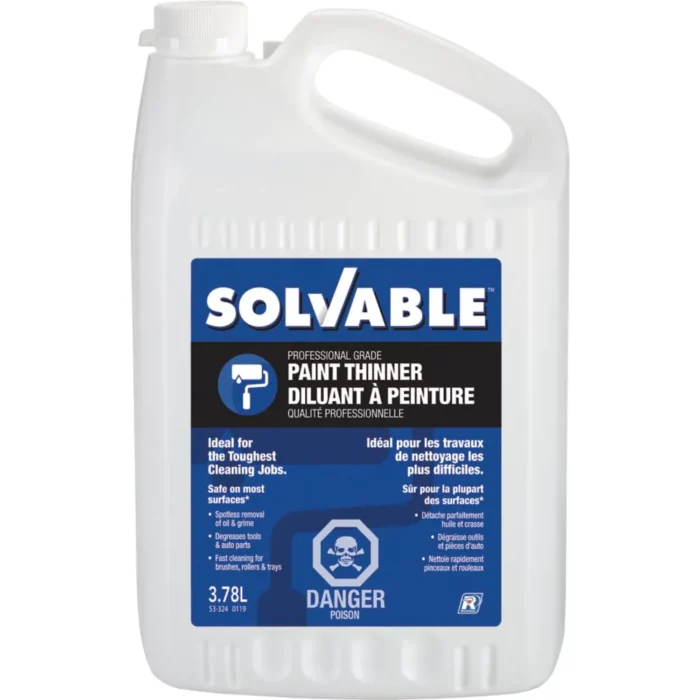
Paint thinner is obviously designed to specifically clean oil-based paint and it’s usually used to clean up brushes or paint spills. That said, the compounds that make up most paint thinners are effective solvents for cleaning a number of substances and most kinds of epoxy can be loosened up with paint thinner.
Most marine epoxies can be cleaned up with paint thinner but some brands have some very strong formulas that can resist paint thinner pretty well. I definitely recommend using the heat gun method first to loosen it and weaken it.
If you wish to use paint thinner make sure you follow safe handling instructions and do so in a well ventilated area and use gloves. You don’t want this stuff on your carpets, either. Saturate a clean rag or paper towel with some paint thinner and then gently and evenly rub it onto the epoxy. You may need to work it in and let it soak for a while.
You can use an additional clean and dry rag to try to clean it up after the fact, removing the epoxy residue and the paint thinner together. Once the area is clean you can try to give it a wash with simple soap and water to make sure the area is fully cleaned when you’re done.
Does Acetone Dissolve Hardened Epoxy?
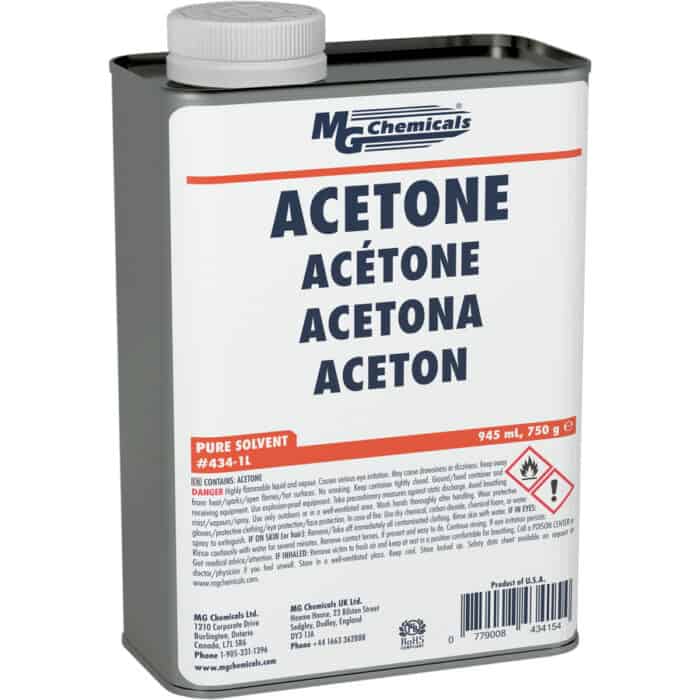
You can definitely use acetone to eat through old epoxy resin as it’s a very reliable solvent. Keep in mind you want to use the acetone safely and in a well-ventilated space. Never use acetone and then a heat gun unless you are 100% positive that the acetone has all evaporated as it’s extremely flammable.
Acetone is best used for wood when you’re trying to remove epoxy, or concrete if you happen to have spilled it on the floor. It works well with these porous surfaces because it evaporates quickly and will cause the least amount of damage to the surface that you’re trying to clean. I would recommend using this over something like paint thinner for a wood surface.
Make sure you’re in a well ventilated space and use a rag soaked with some acetone to gently rub the area covered in epoxy. You’ll want the acetone to soak in so make sure the rag is suitably damp and you’ll have to let it sit and saturate the space for a little while. Keep in mind that acetone also evaporates very fast, so you may need to have the damp rag covering the space to keep it moist as long as you need to.
Can You Use DeNatured Alcohol to Clean Up Epoxy?
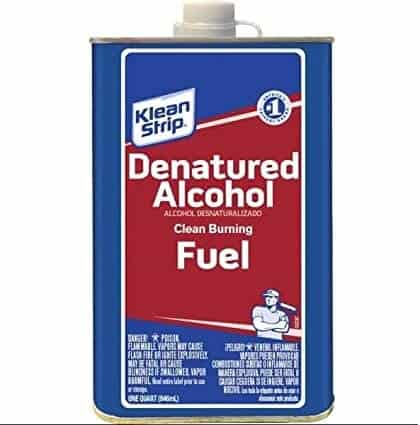
Denatured alcohol is another good solvent to use when removing epoxy as it can soften it up pretty well. I recommend actually making a combo with it which involves mixing denatured alcohol with paint thinner. Use the paint thinner first to soften the epoxy and then finish off by using a denatured alcohol-soaked rag to clean up the residue. Denatured alcohol alone may not be strong enough if the epoxy is well cured and too old.
Can I Remove Epoxy with Vinegar?
You might see this listed online as a method to remove epoxy and it seems like a great idea because it’s much safer than other solvents. That said, this is probably only going to work on uncured epoxy. Vinegar on already cured epoxy might do something but you’re going to have to wait a long, long time. I gave this a try and rubbed some at first and it did nothing. I even let it soak for a few hours and still nothing. So if you get to the epoxy in time, vinegar is a safe, environmentally friendly but once it’s cured you’re probably out of luck.
If you happen to get epoxy on your hands or on something more delicate like a deck chair, vinegar is the go to solvent for getting it off. That’s because it’s not just safe for the environment but it’s safe for you. Also it’s because you’ll likely notice it on your hands and be able to remove it while it’s still wet.
If the vinegar isn’t working well enough, acetone is another potentially safe option for your hands to get off some stubborn epoxy. Your best bet is to avoid this problem altogether to make sure you’re wearing gloves when handling epoxy.
What Other Chemical Adhesive Remover Gets Rid of Epoxy?
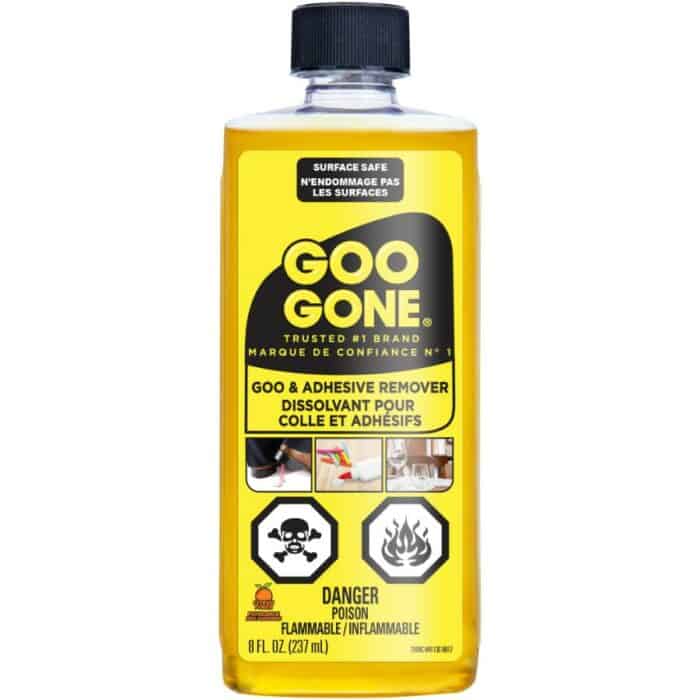
There are a number of products designed to remove epoxy and other hard marine adhesives but you want to tread carefully with these in some cases. What you’re removing epoxy from is a big consideration for how to remove it. For instance, if you want epoxy on metal it can stand up to pretty much any solvent or mixture you can find so something like Goo Gone may work out great. But you may need to check the label to ensure that it’s safe to use on something like fiberglass or wood. Some chemical compounds can cause even worse damage to the surface you’re cleaning than the epoxy did, so double check that.
If it’s a marine specific formula it will probably work well when you follow instructions but if it’s designed for epoxy or adhesives in general, always make sure it’s safe for the surface you want to use it on.
Remember that a solvent like acetone works because it can soak into the surface you’re cleaning. Since that isn’t an option with metal, acetone would be essentially useless here. You’ll want to stick with paint thinner, or one of these commercial brands.
Cleaning Up Spilled Epoxy
One thing to remember is that epoxy can be dangerous if not handled properly. Cleaning up cured epoxy resin and old epoxy is one thing, but if you spill liquid epoxy you need to remove it as well and you need to do so safely. Fortunately, removing uncured epoxy is much easier.
If you have a spill on the floor you want to get it absorbed quickly. Things like sand, clay and kitty litter can be poured on it providing it’s an inorganic litter. Never use sawdust or litters that are made from things like ground up corn cobs or other vegetable material to remove epoxy resin.
Mixing epoxy with a dry cellulose based substance like sawdust can cause the mixture to combust as it dries out, so definitely avoid that. Likewise, if you’re throwing towels or anything covered in epoxy in the trash, make sure there’s no sawdust in the garbage already.
Your best bet once using sand or clay is to use a scraper to scrape up whatever fell, dispose of the solid material and use something like paper towels to wipe up the floor. You can remove the last of the residue with the compounds we’ve already mentioned, things like alcohol or acetone, etc. You can then wash the floor with some soapy water.
If you ever have left over resin or epoxy glue, don’t throw it out in a liquid state. Mixed epoxy especially can generate a lot of heat so if you have it even sitting out it’s a fire risk. If you toss out a can or pot that has some leftover in the bottom there’s an even bigger fire risk.
The Bottom Line
The best way to remove cured epoxy resin is to warm it with a heat gun so that it becomes malleable and easy to scrape clean. Afterward you can use a solvent to finish cleaning up any residue. Paint thinner works very well on metal and other non-porous surfaces while acetone can work fairly well on wood or concrete.
Make sure you’re wearing safety equipment and always keep your space well ventilated when using solvents to clean epoxy resin. You may need some patience and some elbow grease to help scrape your surface clean and, if using solvents, always make sure they’re safe for the surface in question.
Categories: Boats











